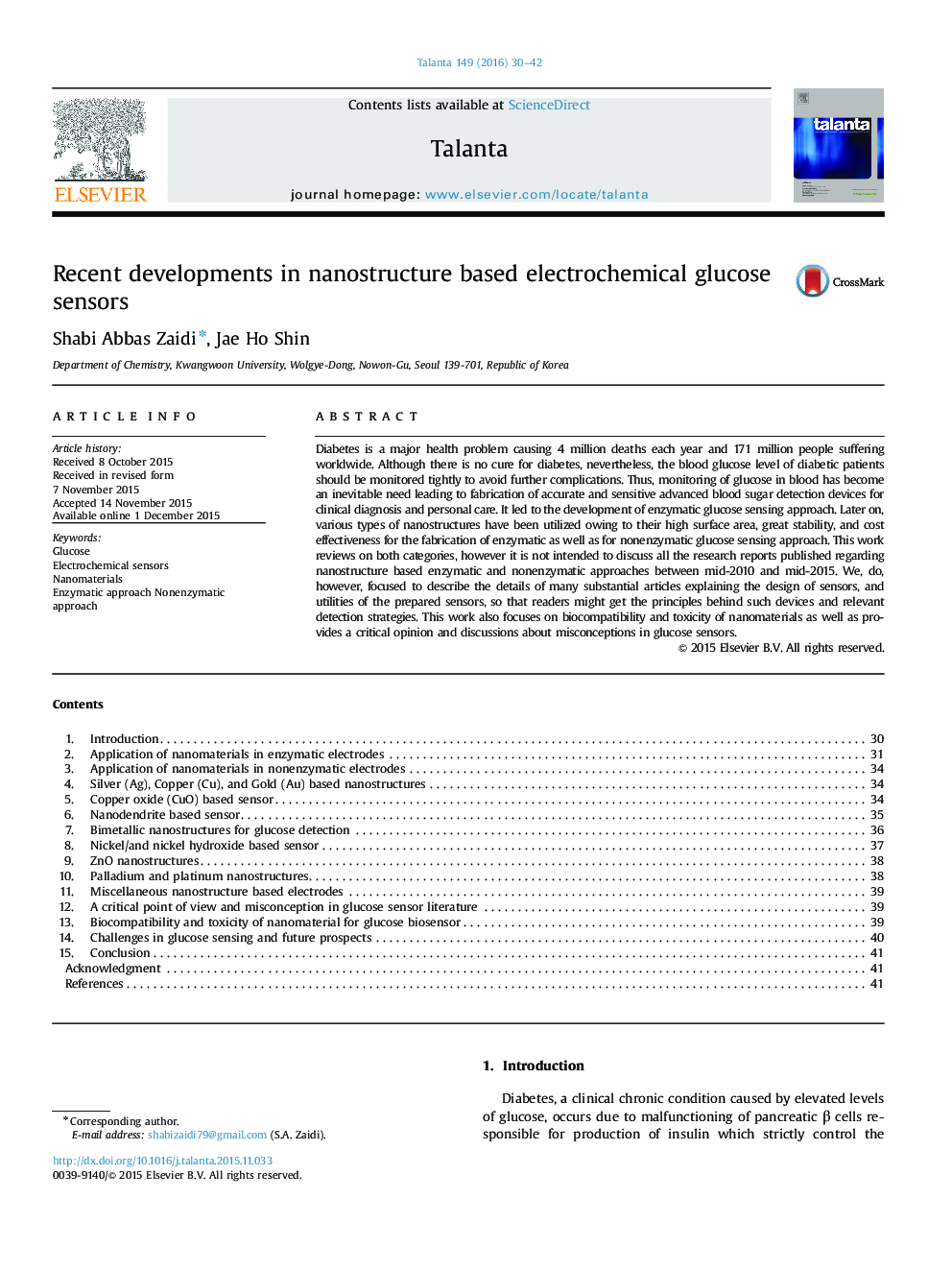| کد مقاله | کد نشریه | سال انتشار | مقاله انگلیسی | نسخه تمام متن |
|---|---|---|---|---|
| 1241802 | 1495786 | 2016 | 13 صفحه PDF | دانلود رایگان |
• Selective nanostructure based enzymatic and nonenzymatic electrochemical sensors were reviewed
• The glucose oxidase (GOx) enzyme has been discussed in the enzymatic approach.
• The misconceptions, toxicity, challenges, and future outlook in nanostructure based glucose sensors are discussed.
Diabetes is a major health problem causing 4 million deaths each year and 171 million people suffering worldwide. Although there is no cure for diabetes, nevertheless, the blood glucose level of diabetic patients should be monitored tightly to avoid further complications. Thus, monitoring of glucose in blood has become an inevitable need leading to fabrication of accurate and sensitive advanced blood sugar detection devices for clinical diagnosis and personal care. It led to the development of enzymatic glucose sensing approach. Later on, various types of nanostructures have been utilized owing to their high surface area, great stability, and cost effectiveness for the fabrication of enzymatic as well as for nonenzymatic glucose sensing approach. This work reviews on both categories, however it is not intended to discuss all the research reports published regarding nanostructure based enzymatic and nonenzymatic approaches between mid-2010 and mid-2015. We, do, however, focused to describe the details of many substantial articles explaining the design of sensors, and utilities of the prepared sensors, so that readers might get the principles behind such devices and relevant detection strategies. This work also focuses on biocompatibility and toxicity of nanomaterials as well as provides a critical opinion and discussions about misconceptions in glucose sensors.
Figure optionsDownload as PowerPoint slide
Journal: Talanta - Volume 149, 1 March 2016, Pages 30–42
